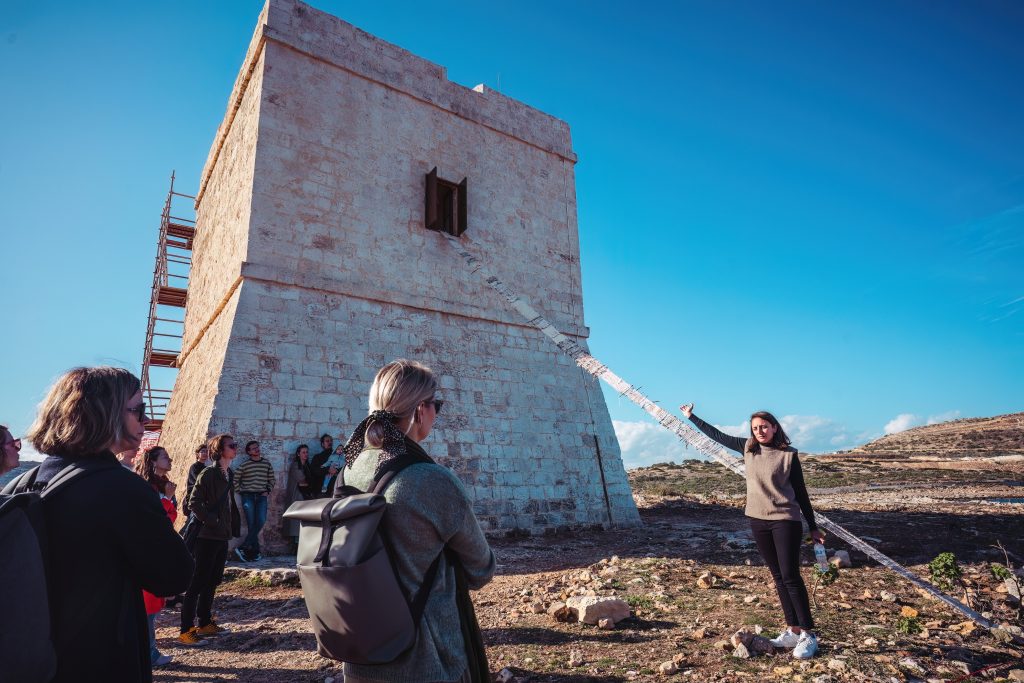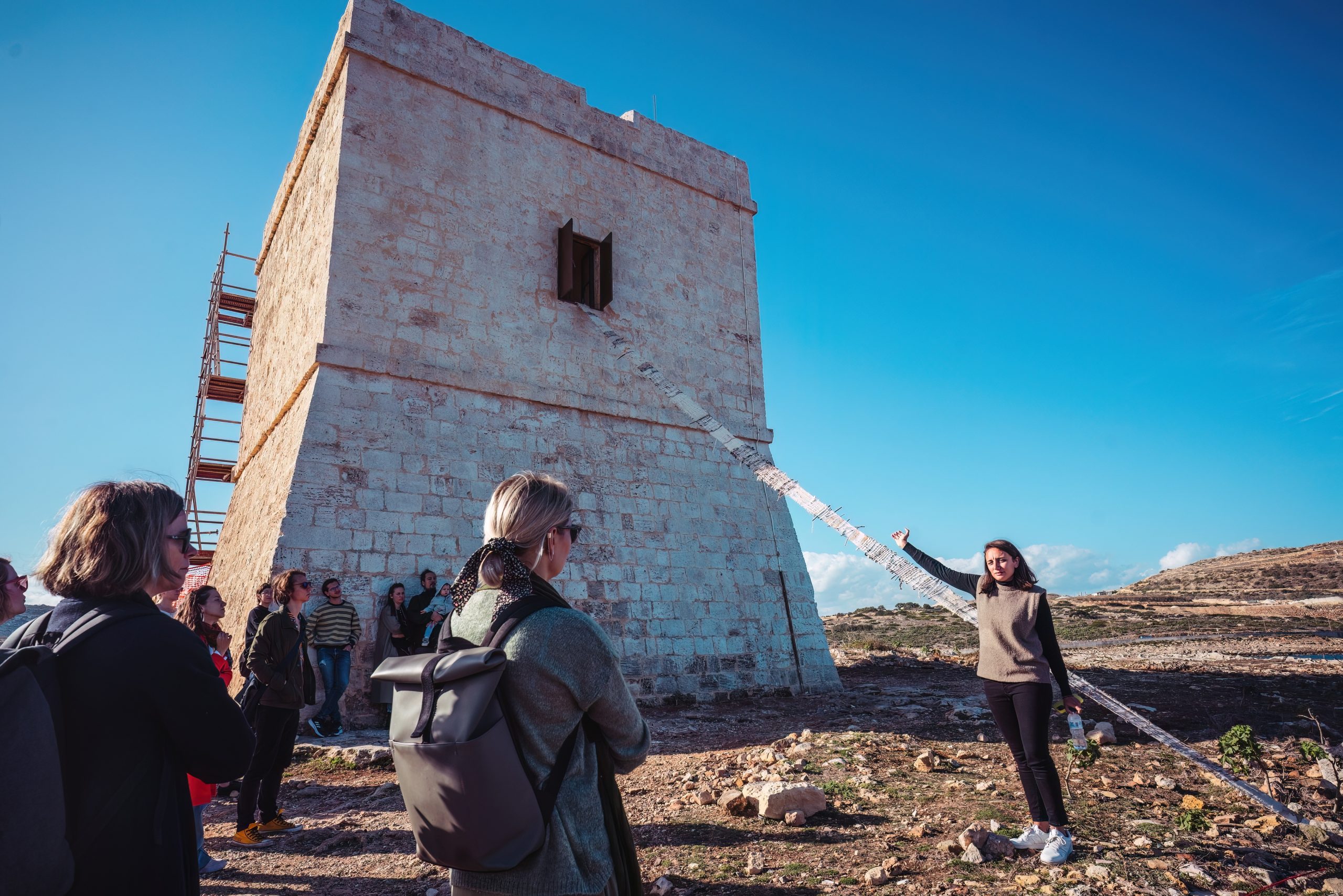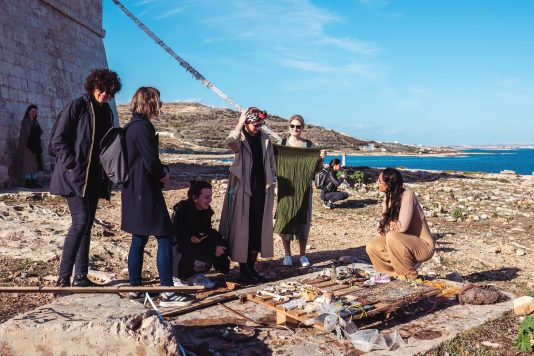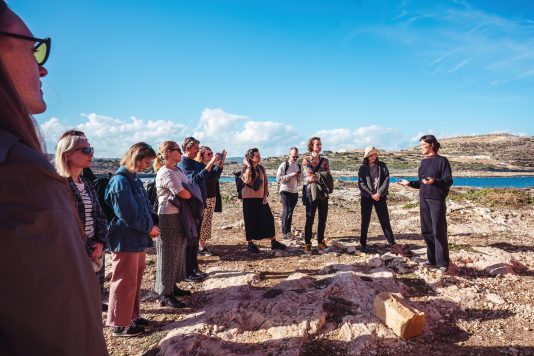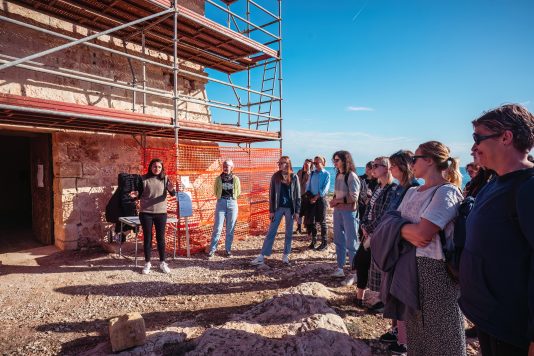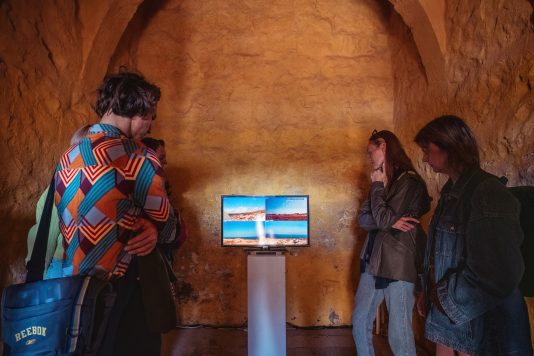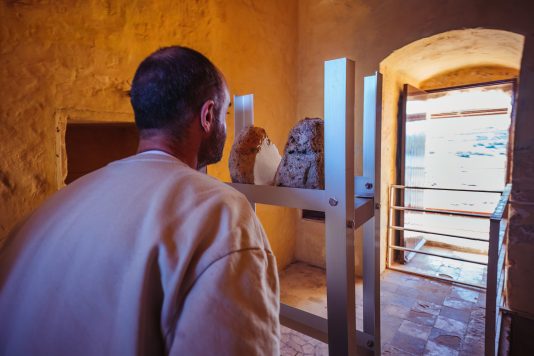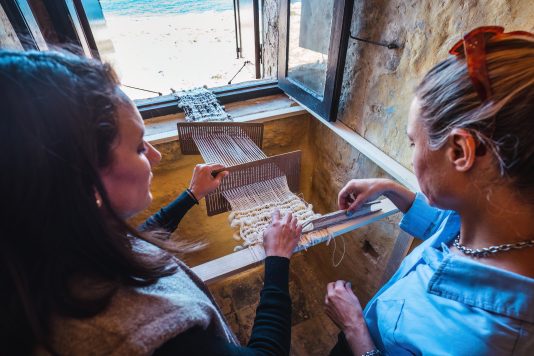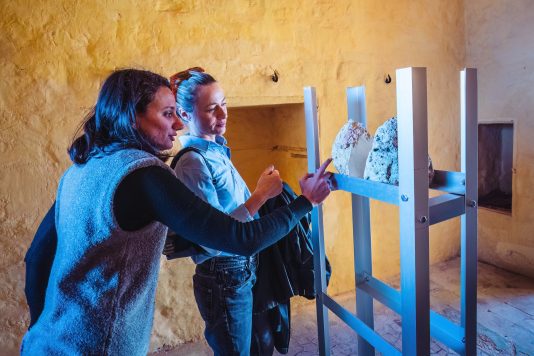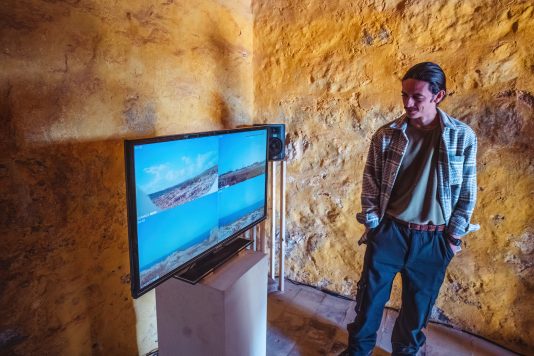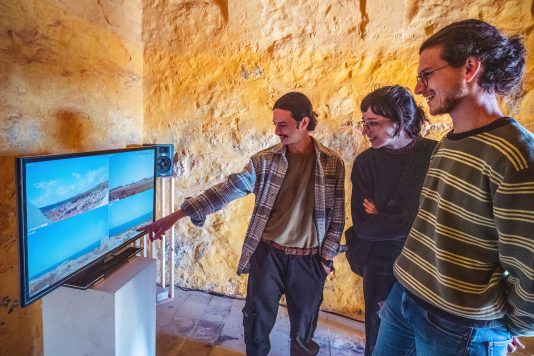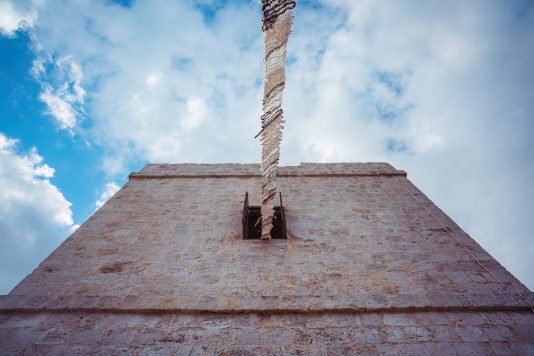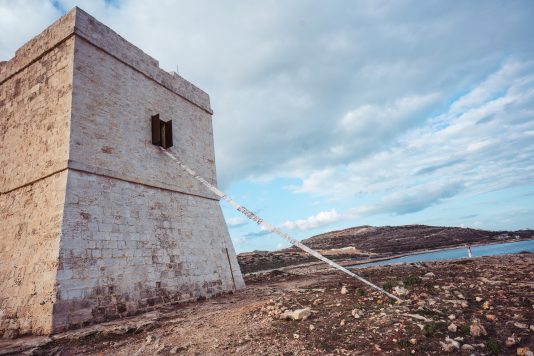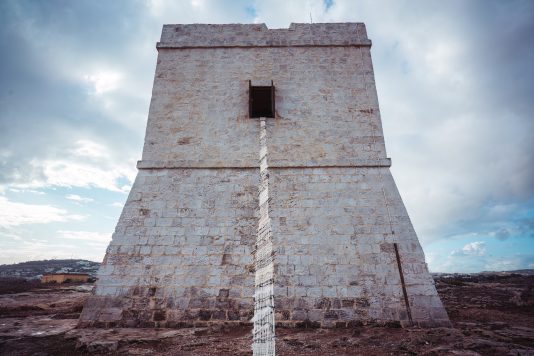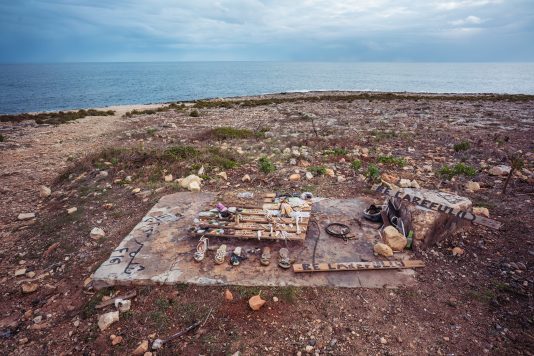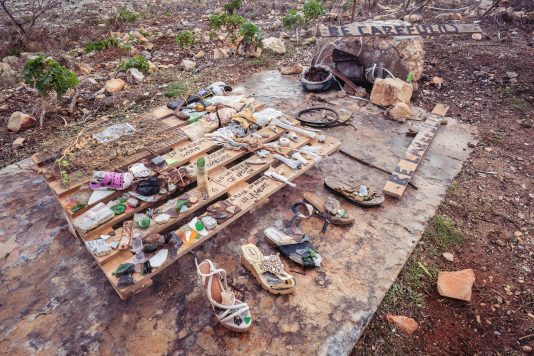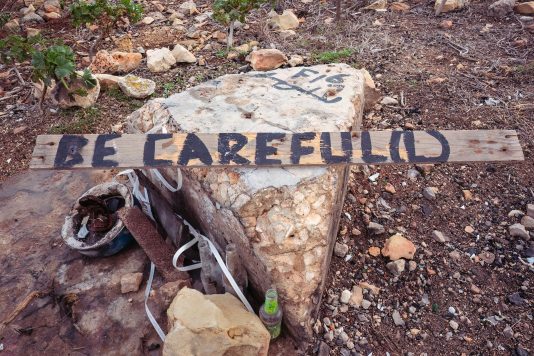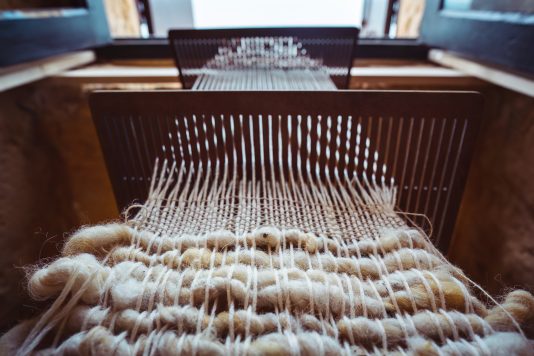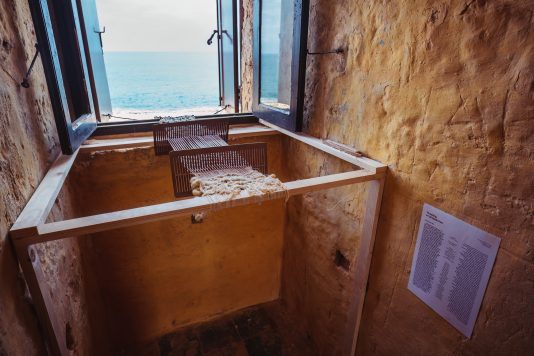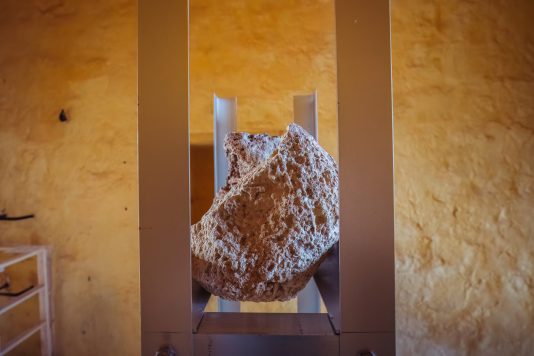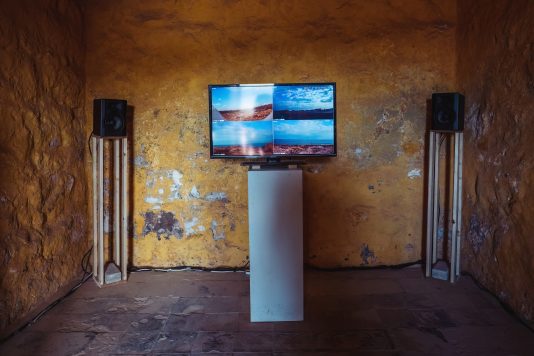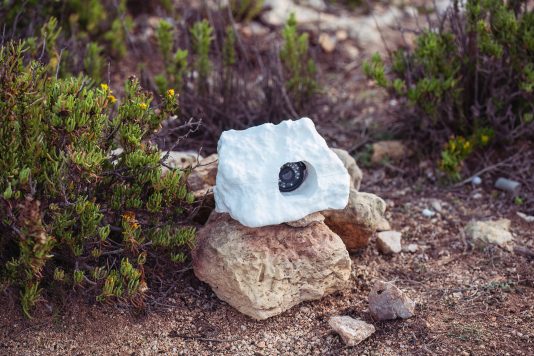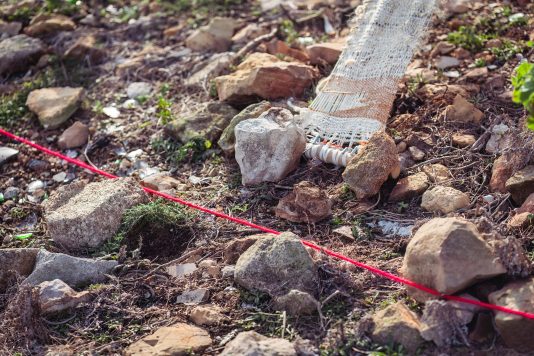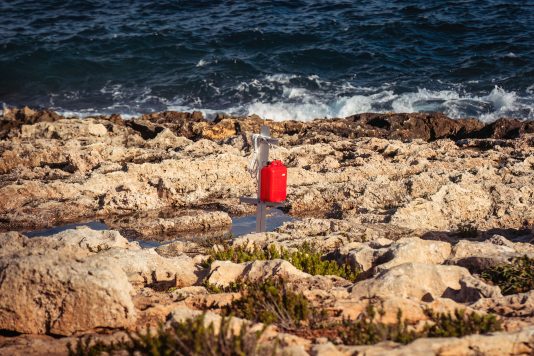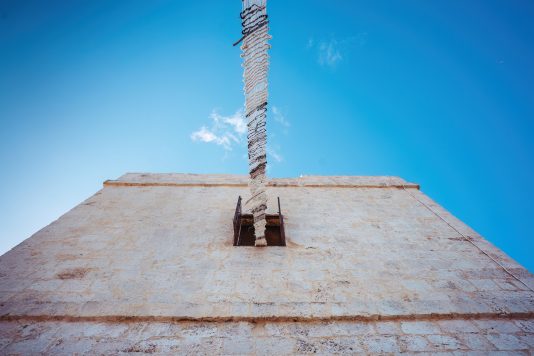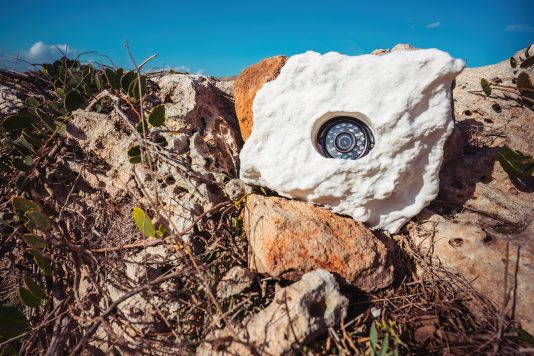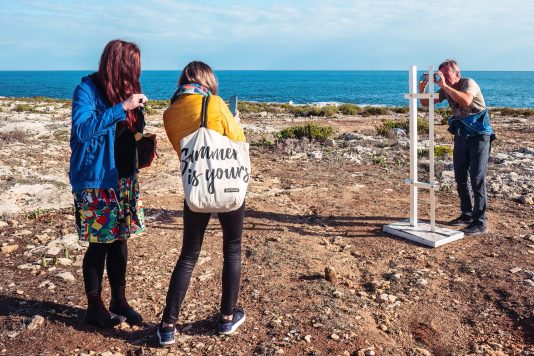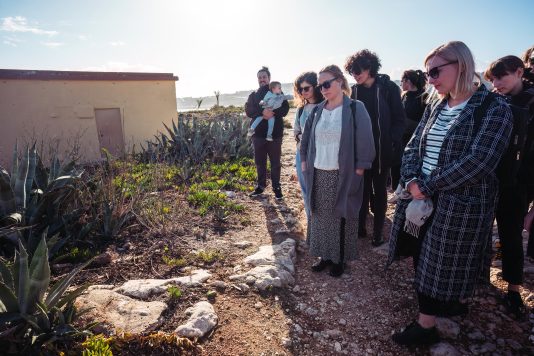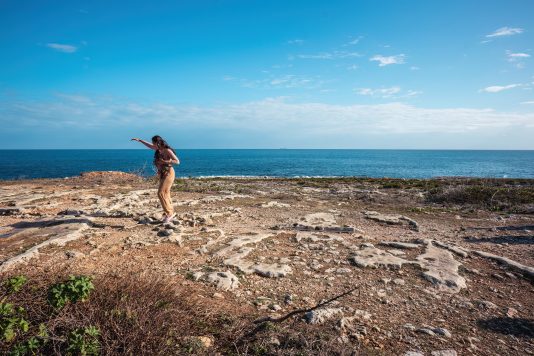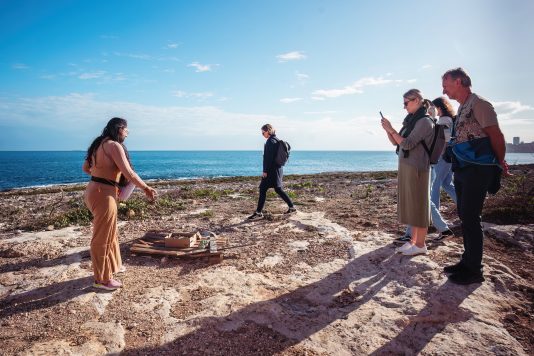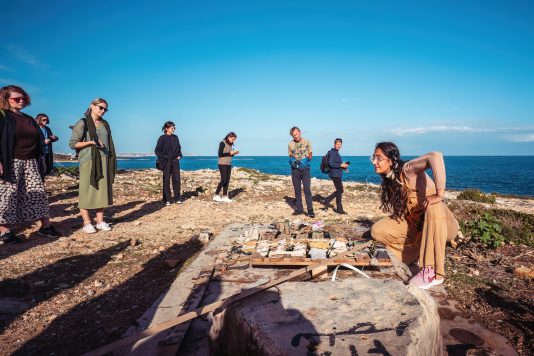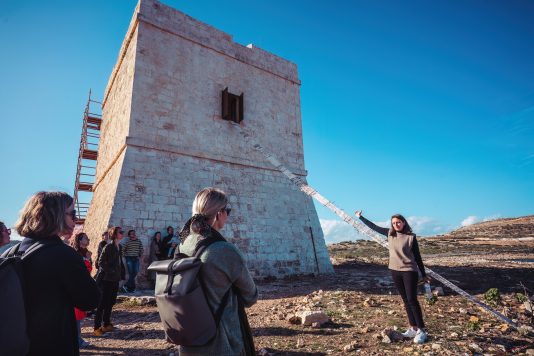Artists
Samuel Ciantar (MT), Marija Rasa Kudabaitė (LT), Fernando P Ferreira (PT), Rakel Vella (MT), Charlene Galea (MT), Alfred Graf (AT)
Curator
Elyse Tonna
Location
Qalet Marku Tower, Baħar iċ-Ċagħaq, Naxxar – Malta
Period
30th October – 30th November – Exhibition 25th November – 10th December
Curatorial Concept
Beyond What Drifts Us Apart (BWDUA) is a multi-year research project that attempts to uncover the less dominant narratives associated with the environments surrounding historic coastal towers in Malta. Aside from challenging the colonial narratives associated with these sites of cultural significance, BWDUA aims to initiate investigations and understand the consequent relationships developed or developing between their surrounding impacted landscapes and non-human communities. Employing decolonial and post-anthropocentric perspectives, BWDUA recognizes that current realities, converging to a climate collapse and an overabundance of technological systems, have exploited natural systems and cycles. As a project, it further intersects climate justice, territorial defense, and bio-cultural diversity preservation.
At the Qalet Marku peninsula, BWDUA attempted to understand and break down dominant representations of landscapes surrounding St Mark’s Tower and its invisible pasts. The charged site, always in constant flux, was selected as it facilitated the investigation of the above-mentioned concepts, which although disparate and complex, are all interwoven. The peninsula is home to legal hunting and bird trapping; it finds itself adjacent to an arterial road and Malta’s main landfill. It is contested for its illegal activities related to open fires and dumping, while the tower itself has laid empty and has been regularly vandalized for many years. With this activity in mind, BWDUA evolved as a space for inquiry and experimentation between the curator and six selected artists: Fernando P Ferreira, Marija Rasa Kudabaitė, Samuel Ciantar, Alfred Graf, Rakel Vella, and Charlene Galea. Together, the research-based process departed from the following research questions:
What marginalized ecological narratives are embedded within and around historical coastal towers? How have they affected natural landscapes and beyond-human communities?
The six-week residency unfolded in the co-creation of works about the untold, overlooked, unheard, and unseen stories of the Qalet Marku peninsula and St Mark’s Tower. As colonial legacies have dispersed across time, the relevance of these coastal towers beyond that related to cultural significance has faded. The creative team became voices, ears, advocates, collaborators, speculators, and dreamers, sharing a space with the nonhuman, intervening sensitively. In general, BWDUA practices coexistence as a methodology throughout the entire collective process and is approached with a curatorial mindset focused entirely on ecological thinking. It reconsiders the dichotomies between the more visible and the invisible, raising aspects related to new materialisms, extractive capitalism, contestation of landscapes, and environmental racism. The interventions eyestone by Rakel Vella, Threading an (un)safe Plot by Fernando P Ferreira, and Antennae for a New Frontier by Samuel Ciantar employ such concepts to various extents.
Throughout the four-week residency, Fernando P Ferreira focused on the socio-political aspects of the site, positioning the peninsula within the widespread exploitation of natural landscapes in Malta. The ladder for the non-human, a 15m long weave co-created and co-authored with another 35 workshop participants, connected an invisible plot of land demarcated with red thread adjacent to the tower, creating contrasting links between the built and unbuilt. In a speculative story about the site, performed as a one-time happening, he declared ownership of the only unbuilt remaining land in Malta as a means to resist overdevelopment and capitalization of coastal land. Both Rakel Vella and Samuel Ciantar facilitated the development of human-made networks, enforcing the idea of the technosphere, challenging it in a way that enabled the protection of the landscape around the tower and making visible the overlooked more-than-human elements and the inconsiderate actions of humankind. As a digital and new media artist, Rakel Vella created four 3D printed stones, derived from local rock formations in the landscape, embedding within them CCTV cameras, locating them around the tower within a 50m radius. Here she overturned the concept of the tower to surveil, challenging that in the post-Anthropocene, the tower can be used to create protection mechanisms for the land itself. On the other hand, Samuel Ciantar created a series of five interventions, embedded in specific locations around the peninsula, creating internal and external networks within the tower and around it, between the structures and beyond. He made visible previous visual networks between historical towers and unseen natural forces such as the wind, broke down technological connectivity, and created mechanisms to understand the rapid rate of rising sea levels.
Focused on giving a voice to more-than-human, the residency nurtured collective thinking and investigation, where the human and non-human, physical and non-physical became whole. Breaking down the dominant modern humanist conventions, where “humans” typically claim a central position in the Anthropocene, overall, the artists and curator, and eventually all the team, became a community of mediators and facilitators, engaging with the nonhuman with a posthuman mindset, consequently becoming entangled and affective. The latter concepts were particularly employed in projects by Marija Rasa Kudabaite, Alfred Graf, and Charlene Galea. In Toeear, Marija amplified the voices of the wind-whispered trees, the murmurs of the ancient stones, the lives of waves crashing upon the shore, and the intricate conversations of wildlife hidden in the landscape. Both Alfred Graf and Charlene Galea, individually and collectively, created points of encounter between the human and non-human through touch. In Sedimentcorpi Qalet Marku, Alfred Graf created sculptures formed from soft natural materials molded through direct contact between the land and his body. On the other hand, in her ever-changing performance Be Careful(l), Charlene Galea brought together instinctive performance and poetry to raise awareness of environmental contamination and climate anxiety. She acted as a voice to micro-organisms to magnify their ‘feelings’, which adapt or else collapse due to irresponsible human activity.
BWDUA at Qalet Marku extended beyond the core team to include several communities. As an extension of Baħar iċ-Ċagħaq, the residents of this hamlet were involved throughout the process, both actively through a collective weaving process by Fernando P Ferreira and also passively through regular community meetings, which kept them aware of the ongoing processes. The Franciscan community, which runs the local church and convent, collaborated directly in various processes, provided a space for workshops, a collective studio space for the team to work in, and shelter. The team collaborated directly with various individuals and organizations throughout the process, which informed the formation of the artistic interventions in various ways. Din l-Art Ħelwa, the guardians of the tower, provided access and historical knowledge; the Malta Rangers Unit, an understanding of the illegal activity and precautionary measures for intervening sensitively. Moreover, Gozo-based weaver Alda Bugeja assisted Fernando P Ferreira in bringing in local natural materials and knowledge. As a side event for community-building, Noah Fabri and Maya Aarohi from Geġwiġija brought their pop-up library to the tower and facilitated the exchange of artistic theoretical frameworks. While each of the organizations and gatekeepers informed the six projects to different extents, they were equally important in the formation of a collective vision and tentacular extensions of the core team.
By embracing the ecotone of these in-between zones through an understanding of the implications on natural landscapes and non-human communities, humanity can facilitate the development of new relationships between geographical, geological, and ecological factors. BWDUA, in general, is guided by the belief of giving agency to beyond-human communities through artistic interventions and thus garnering an understanding of their validity in the understanding of the impacts of colonization and beyond, to pave the way for the safeguarding of socio-environmental and cultural heritage aspects of threatened landscapes.
Curatorial text by Elyse Tonna
